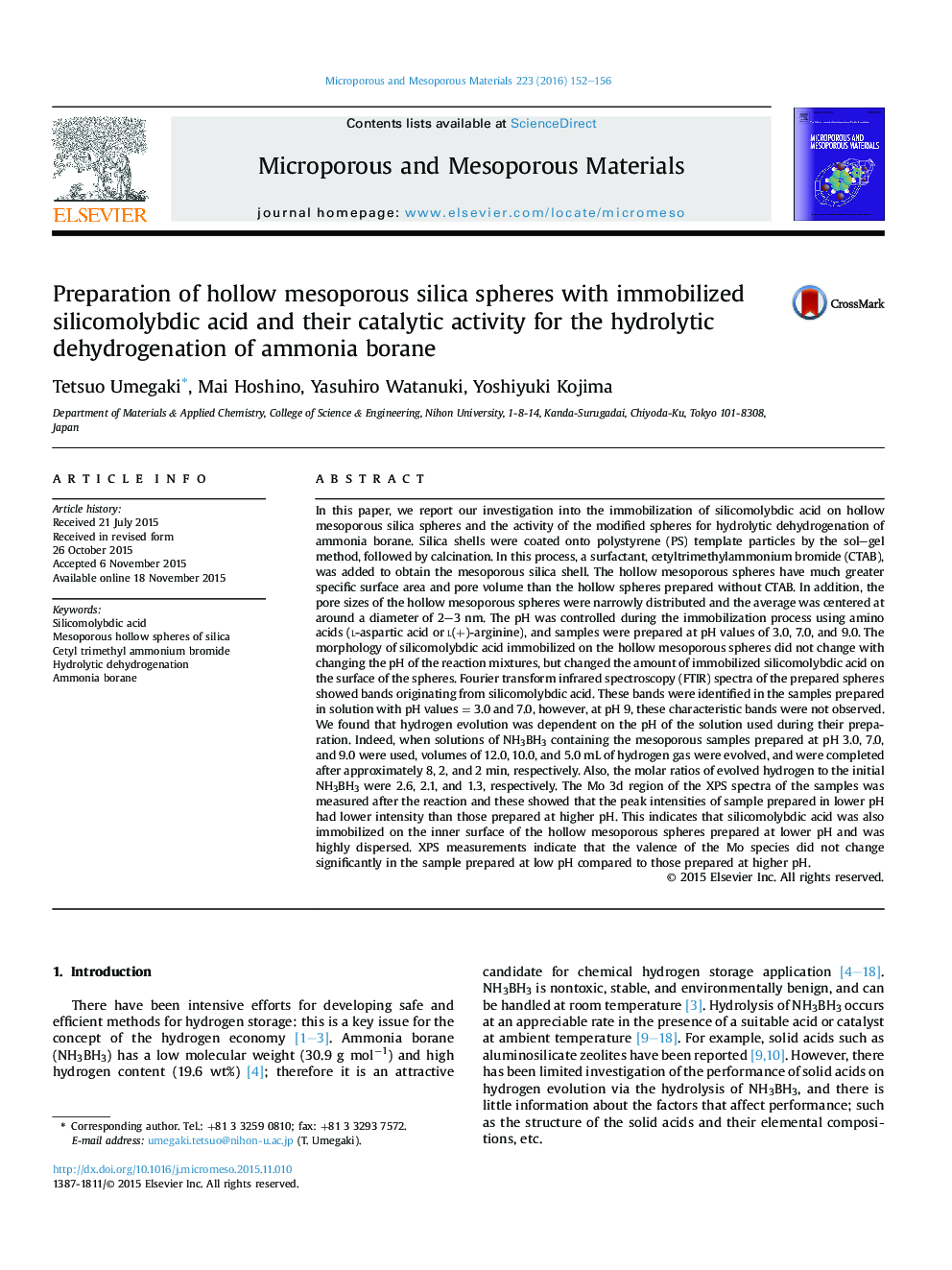| Article ID | Journal | Published Year | Pages | File Type |
|---|---|---|---|---|
| 72288 | Microporous and Mesoporous Materials | 2016 | 5 Pages |
•We investigated immobilization of silicomolybdic acid on hollow mesoporous silica.•Changing pH of the reaction mixtures changed the amount of immobilized silicomolybdic acid.•Hydrogen evolution was dependent on pH of solutions used during their preparation.•Valence of Mo species did not change significantly in the sample prepared at low pH.
In this paper, we report our investigation into the immobilization of silicomolybdic acid on hollow mesoporous silica spheres and the activity of the modified spheres for hydrolytic dehydrogenation of ammonia borane. Silica shells were coated onto polystyrene (PS) template particles by the sol–gel method, followed by calcination. In this process, a surfactant, cetyltrimethylammonium bromide (CTAB), was added to obtain the mesoporous silica shell. The hollow mesoporous spheres have much greater specific surface area and pore volume than the hollow spheres prepared without CTAB. In addition, the pore sizes of the hollow mesoporous spheres were narrowly distributed and the average was centered at around a diameter of 2–3 nm. The pH was controlled during the immobilization process using amino acids (l-aspartic acid or l(+)-arginine), and samples were prepared at pH values of 3.0, 7.0, and 9.0. The morphology of silicomolybdic acid immobilized on the hollow mesoporous spheres did not change with changing the pH of the reaction mixtures, but changed the amount of immobilized silicomolybdic acid on the surface of the spheres. Fourier transform infrared spectroscopy (FTIR) spectra of the prepared spheres showed bands originating from silicomolybdic acid. These bands were identified in the samples prepared in solution with pH values = 3.0 and 7.0, however, at pH 9, these characteristic bands were not observed. We found that hydrogen evolution was dependent on the pH of the solution used during their preparation. Indeed, when solutions of NH3BH3 containing the mesoporous samples prepared at pH 3.0, 7.0, and 9.0 were used, volumes of 12.0, 10.0, and 5.0 mL of hydrogen gas were evolved, and were completed after approximately 8, 2, and 2 min, respectively. Also, the molar ratios of evolved hydrogen to the initial NH3BH3 were 2.6, 2.1, and 1.3, respectively. The Mo 3d region of the XPS spectra of the samples was measured after the reaction and these showed that the peak intensities of sample prepared in lower pH had lower intensity than those prepared at higher pH. This indicates that silicomolybdic acid was also immobilized on the inner surface of the hollow mesoporous spheres prepared at lower pH and was highly dispersed. XPS measurements indicate that the valence of the Mo species did not change significantly in the sample prepared at low pH compared to those prepared at higher pH.
Graphical abstractFigure optionsDownload full-size imageDownload as PowerPoint slide
